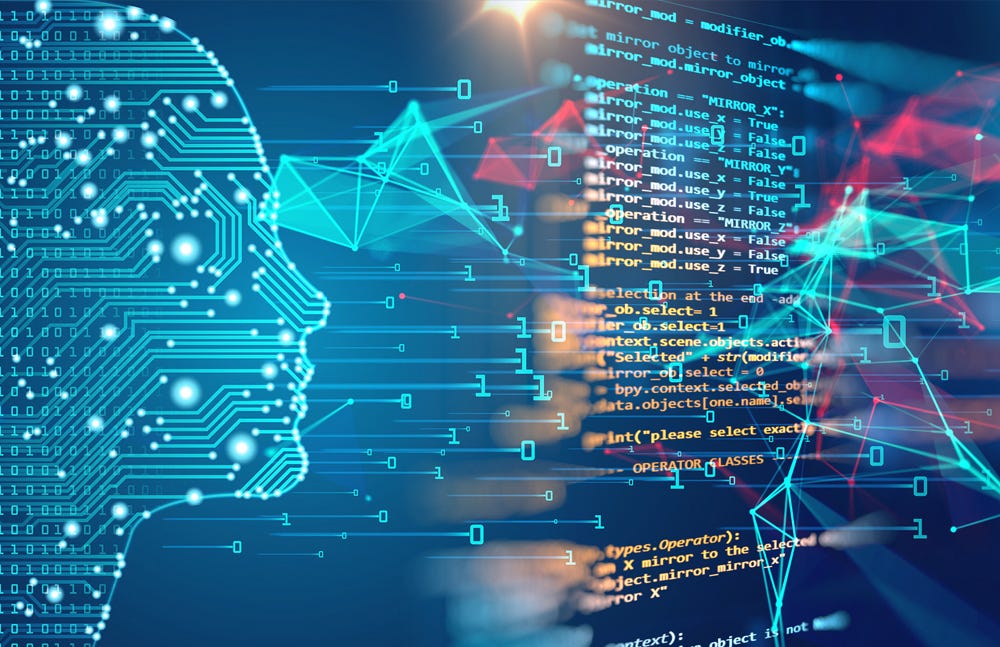
Machine Learning Application: Everything You Need To Know
Machine Learning allows companies to undertake processes that are performed manually by humans. For instance, collating news content from the Web, answering customer calls, driving cars and researching relevant news use manual processes but are now replaced with digitisation and Machine Learning.
This achieves efficiencies in resource use and saves time. Machine Learning also allows the scaling up, so large operations can be handled with ease, such as the prediction of natural disasters or large clinical trials of medicines. It also enables companies to make innovative forays for customer satisfaction and gain a competitive edge. Machine Learning gives a view of customer behaviour, which helps drive innovation in products and services, like the intelligent use of Google Maps.
Many large enterprises and leading companies such as Google and Facebook are thus using Machine Learning application in their business operations to reap the benefits of digital transformation.
Machine Learning Applications
Artificial Intelligence (AI) and Machine Learning are increasingly used in many modern lifestyle applications for saving time and making life easier and simpler. Machine Learning is also used in the rollout of new product features or services that promote customer satisfaction and brand value.
Listed below are some applications that are transforming everyday lives with enhanced capabilities and features.
Traffic Alerts
Your Google Maps application uses data like your real-time location, travelling speed, date and time, and answers your questions. Are you on the correct path with the shortest route to your selected destination? How high is the traffic on the route? Is the traffic slow-moving or congested? How far is the app cab or upcoming bus from a specific bus stop? The Google Maps features consider various factors like how many vehicles are currently on the route or the number of people using Google Maps and other historical data on that route.
AI and Machine Learning algorithms are leveraged to answer your questions on the go and even make predictions about bus delays or the time of arrival of your cab.
Video Surveillance
Some instances of video surveillance use:
- Prevention of theft of public property
- Abnormal event detection
- Parking lots
- Traffic monitoring
- Shopping patterns
- Movement of individuals in public spaces

Video surveillance is an advanced application of Machine Learning on data generated by automated 24/7 surveillance devices. Surveillance footages become the training dataset and help Machine Learning capabilities to detect objects and spot targets from the footage.
Email Spam and Malware Filtering
Any email we receive is filtered automatically for priority mail, promotions, and spam. Spam mails are automatically sent to the spam box and, malware is detected using Machine Learning algorithms like Naive Bayes Classifier or Multi-Layer Perceptron, Decision tree.
Commonly used email filters are:
- Content Filter
- Header/mail priority filter
- Blacklists filter
- Rules-based filters
Google Translate
In this multi-cultural and multi-ethnic environment, it sometimes becomes necessary to translate a language to English or other languages. This comes to play during Internet searches or reading social media posts in languages other than English or the local language. Even when you are traveling to a foreign land, the language barrier is a problem that makes holidays difficult. Business travel, in particular, calls for a basic idea of the local language of that place. So how does Machine Learning help?
Google Translate feature uses Google Neural Machine Translation to decode and translate thousands of languages, words, and sentences in any language of your choice to make travel, social media access, and information easy and convenient.
Stock Market Signals Using Machine Learning
Stock markets are known for volatility, fluctuations, and unpredictability. So how does the investor use technology to aid his market analysis for signals and scientific investment decisions?
Machine Learning algorithms identify social sentiments, stock market variables, external market factors, company performance, dividend history, etc., to design stock market signals for automated investment decisions.
Reinforcement Learning in News Recommendation
News recommendation is another lifestyle feature designed to save time spent reading general or irrelevant news and curating news based on the user preference, interest and behavior, and reader reviews or likes. News recommendation features in Google or other applications use a reinforcement learning system to track the user’s reading habits, like how the reader interacts with the content via clicks and shares or the time spent on the news article, to make recommendations of news features. The reinforcement learning uses news content and context such as time of news publication and freshness, reader habits, news headline, and publisher aspects like popularity and rating; to make news recommendations to the reader.
Autonomous Cars
Self-driving cars are one of the most sophisticated and trendy applications of AI and Machine Learning. Driverless cars need to identify objects like pedestrians and other vehicles or lamp posts and make decisions based on object classification and interpretation algorithms. Historic data is used to train the Machine Learning algorithm to make the right choice of navigation.
Some of the Machine Learning algorithms used are:
- Scale-invariant feature transform (SIFT)
- AdaBoost
- TextonBoost
- You only look once (YOLO)
Real-Time Dynamic Pricing
Making travel decisions for holiday or business reasons has become easy with instant and automated online bookings. It is the same when booking cab services like Ola. However, you must have noticed that prices for flight tickets or local cab rides always fluctuate.
Travel platforms and cab aggregators use sophisticated AI and Machine Learning techniques to fix the dynamic pricing. Many factors are considered, like peak season/peak office hours, availability of flights/cabs, flight paths/cab routes and distances, and so on. For instance, when demand for rides is high, there is a price surge for cab rides. During festival season, flights come expensive. This is because the algorithms are devised to charge higher prices whenever customer demand is high. Other factors considered are customer response to surge pricing and availability of rides, competition, weather conditions, time of the day, and traffic conditions. Based on these parameters, algorithms perform to suggest optimum pricing so as not to lose out on customers.
Machine Learning algorithms also help offer solutions like discounted pricing and promotional offers.
Online Fraud Detection
As online transactions become a way of life, the risk exposures to data breaches and fraud also increase. There are various ways fraudulent transactions take place using fake accounts and fake IDs to steal personal information and siphon off money. Machine Learning frameworks make online transactions a safe and secure environment, with algorithms like Feed Forward Neural Network to detect fraudulent from genuine transactions. For each genuine transaction, the outputs convert into hash values, and these become the input data for further transactions. The regular pattern of transactions is studied for deviations, and fraud is detected automatically.






